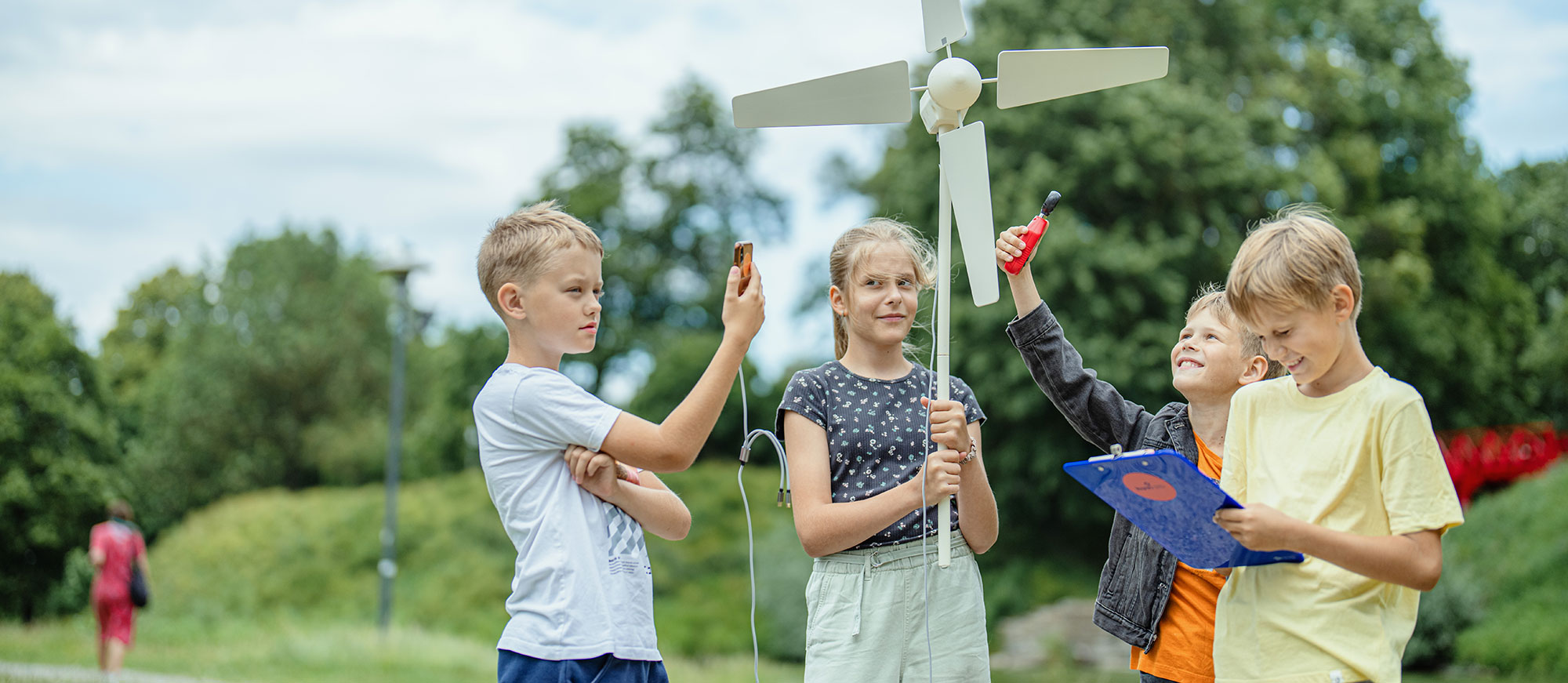Outdoor learning is a proven approach in education, and its positive impact on children’s health and overall well-being has been widely discussed in literature (and seen in real life).
Photo by Tanel Meos
As a pedagogical approach, outdoor learning promotes holistic and experiential teaching, allowing the integration of knowledge and skills from various fields. Outdoor learning is learner-centred, fosters collaboration skills, and often connects learning to the surrounding environment.
Benefits of outdoor learning:
- students remember what they’ve learned for a longer time;
- students’ self-confidence and teamwork skills are boosted;
- a positive impact on learning outcomes;
- increases students’ daily physical activity;
- reduces health risks.
Outdoors, learning takes place in nature or not far from it and helps students to better remember the activities and what they’ve learned over a longer period, connecting new knowledge with their previous studies. Research indicates that being in a natural environment enhances intelligence and creativity while also supporting students’ social well-being. Additionally, outdoor learning makes students more self-assured and raises their self-esteem.
An important benefit of outdoor learning is its impact on children’s activity levels. Just to say it bluntly: children move more when their lessons are outdoors. Prolonged sitting in fixed positions reduces performance and increases the risk of various health issues such as heart diseases or weakening of musculoskeletal problems. According to WHO, 81% of the world’s youngsters (11–17-year-olds) do not meet the daily recommended levels of physical activity. Most of the classroom hours are spent sitting, and this is where outdoor learning projects come in handy to increase students’ daily physical activity.
One thing we have noticed with our own kids – once they are more outdoors at school, they are more eager to spend their off-school hours outside as well. And all parents know what that means – yup, less time with screens!
References:
* Davies, R., & Hamilton, P. (2016). Assessing learning in the early years’ outdoor classroom: examining challenges in practice, Education, 3-13, 46:1, 117-129
* Ratinen, I., Sarivaara, E., & Kuukkanen, T. (2021). Finnish student teachers’ ideas of outdoor learning, Journal of Adventure Education and Outdoor Learning
* Sjöblom, P., Eklund, K., & Fagerlund, G. (2021). Student teachers’ views on outdoor education as a teaching method−two cases from Finland and Norway, Journal of Adventure Education and Outdoor Learning
* Atchley, R. A., Strayer, D. L., & Atchley, P. (2012). Creativity in the Wild: Improving Creative Reasoning through Immersion in Natural Settings. PLoS ONE 7(12): e51474
* Frumkin, H. (2001). Beyond toxicity: Human health and the natural environment. American Journal of Preventive Medicine, 20(3), 234–240.
* Fägerstam, E., & Blom, J. (2012). Learning biology and mathematics outdoors: effects and attitudes in a Swedish high school context, Journal of Adventure Education & Outdoor Learning.
* Hodson, C. B., & Sander, H. A. (2017). Green urban landscapes and school‐level academic performance. Landscape and Urban Planning, 160, 16–27.
* Mallone, J. (2008). Every Experience Matters: An Evidence based Research Report on the Role of Learning Outside the Classroom for Children’s Whole Development from Birth to Eighteen Years; Farming and Countryside Education for UK Department Children, School and Families: Wollongong, Australia
* Romar, J.-E., Enqvist, I., Kulmala, J., Kallio, J., & Tammelin, T. (2019). Physical activity and sedentary behaviour during outdoor learning and traditional indoor school days among Finnish primary school students. Journal of Adventure Education and Outdoor Learning, 19(1), 28–42
* World Health Organization (2021). Physical activity. Retrieved July 15, 2023 from https://www.who.int/europe/news-room/fact-sheets/item/physical-activity



